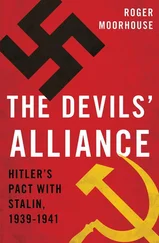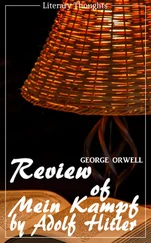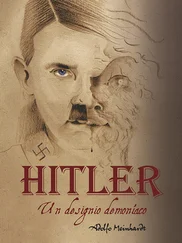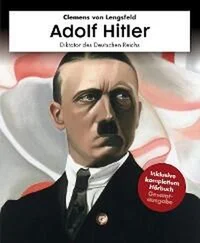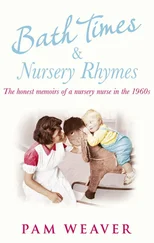Christa Schroeder - He Was My Chief - The Memoirs of Adolf Hitler's Secretary
Здесь есть возможность читать онлайн «Christa Schroeder - He Was My Chief - The Memoirs of Adolf Hitler's Secretary» весь текст электронной книги совершенно бесплатно (целиком полную версию без сокращений). В некоторых случаях можно слушать аудио, скачать через торрент в формате fb2 и присутствует краткое содержание. Город: Barnsley, Год выпуска: 2012, ISBN: 2012, Издательство: Frontline Books, Жанр: История, Биографии и Мемуары, на английском языке. Описание произведения, (предисловие) а так же отзывы посетителей доступны на портале библиотеки ЛибКат.
- Название:He Was My Chief: The Memoirs of Adolf Hitler's Secretary
- Автор:
- Издательство:Frontline Books
- Жанр:
- Год:2012
- Город:Barnsley
- ISBN:978-1-7830-3064-4
- Рейтинг книги:4 / 5. Голосов: 1
-
Избранное:Добавить в избранное
- Отзывы:
-
Ваша оценка:
- 80
- 1
- 2
- 3
- 4
- 5
He Was My Chief: The Memoirs of Adolf Hitler's Secretary: краткое содержание, описание и аннотация
Предлагаем к чтению аннотацию, описание, краткое содержание или предисловие (зависит от того, что написал сам автор книги «He Was My Chief: The Memoirs of Adolf Hitler's Secretary»). Если вы не нашли необходимую информацию о книге — напишите в комментариях, мы постараемся отыскать её.
He Was My Chief: The Memoirs of Adolf Hitler's Secretary — читать онлайн бесплатно полную книгу (весь текст) целиком
Ниже представлен текст книги, разбитый по страницам. Система сохранения места последней прочитанной страницы, позволяет с удобством читать онлайн бесплатно книгу «He Was My Chief: The Memoirs of Adolf Hitler's Secretary», без необходимости каждый раз заново искать на чём Вы остановились. Поставьте закладку, и сможете в любой момент перейти на страницу, на которой закончили чтение.
Интервал:
Закладка:
One afternoon a telephone message brought the news that chief adjutant Wilhelm Brückner and his friend Sophie Stork had been badly injured in a road accident at Reit im Winkel and had been taken to the hospital at Traunstein. Brückner had fallen asleep at the wheel and collided with a stack of wood. How lucky he was to have had Dr Brandt along as a passenger. Calmly and carefully he took the initiative, did everything necessary to make the casualties comfortable and carried out the operation himself at Traunstein hospital. While Sophie Stork escaped with a broken arm, Brückner was seriously hurt, sustaining a skull fracture and losing an eye. Göring, who was also a passenger, was so impressed by the skill of the young doctor that he exclaimed: ‘If ever I have to be operated on, then only by Dr Brandt!’ Until then Hitler had never had a medical aide on his various trips, but now he saw the necessity. It was therefore not surprising that he should ask the pleasant young Brandt if he would like to join his staff as doctor ( Begleitarzt ) and he agreed. A short while later Brandt married Anni Rehborn. Both Hitler and Göring were guests at the wedding.
The ability of Dr Brandt was proverbial, as was his joviality: a doctor with the soul of a Paracelsus: to the last his life was devoted to his calling. In the true sense of the term he embraced the higher life and let it embrace him too. He matured to a greatness in which he overshadowed the death sentence which awaited him at the end of the road. Brandt was the Führer’s ‘emergencies-only doctor’ but his role was actually only as a surgeon while Hitler was travelling: otherwise he worked at the Surgical University Clinic in Berlin’s Ziegel-Strasse where Dr Werner Haase and Dr von Hasselbach also worked as surgeons and occasionally deputised for Brandt on journeys and when Hitler was at the Berg.
At this time Hitler and his guests used to go on short rambles. A favourite destination was the Hochlenzer, where they would sit in front of the small house on wooden benches in the sun and enjoy the glorious view to Königssee, which glittered in the distance. At Hochlenzer a very refreshing curds and whey was scooped up and served in brown earthenware bowls. It was a rare delicacy. The milk was never moved until it curdled to prevent bubbles forming in the curd. Other walks went to Scharitzkehl and the Vorderbrand. They were glorious little treks. Hitler would wear a bright blue corduroy jacket. In later years the walks were dropped, and after lunch he would venture no further than the small tea-house on the Mooslahner Kopf.
In the 1930s Hitler would always spend Christmas on the Berg although after Geli’s suicide in 1931 Christmas was a difficult period for him and awkward for his guests. He would allow a tree to be erected in a corner of the Great Hall but no carols were sung. New Year on the other hand was celebrated in the traditional manner. The meals were festive, and everybody was served sparkling wine. At the stroke of midnight Hitler would touch glasses with his guest and sip, though he always pulled a face as he did so for he ‘could not understand how a person could take pleasure in drinking vinegar water’. He would then lead his guests to the terrace to watch the fireworks display at Berchtesgaden. Afterwards he would autograph the table-cards of all his guests and a group photo would be taken before the fireplace.
Chapter 14
The Berghof
BEFORE HITLER BEGAN WITH the conversion, or rather the extension, of Haus Wachenfeld, [118] According to Hitler in Heim, Monologe , the house was built in 1917. (TN)
the steep road from Berchtesgaden to the Obersalzberg, which was very dangerous in winter due to ice, was widened. Amongst other things it was Hitler’s idea to install heating below the road. At his wish the small old house was left untouched by the extension work creating the Berghof which began in March 1936 after Hitler conferred with architect Degano from Gmund am Tegernsee on the plans. A breach was made in the wall of the former staff room on the first floor allowing a Roman arch and corridor to be built for access to the Great Hall of the new structure. On this new floor were also located the private rooms of Hitler and Eva Braun, the apartment of the house manager and the staff rooms. We had two secretaries’ rooms in the old house, the smaller being kept bright blue and white; mine, rather larger, was painted red and had a balcony.
Beyond the Roman arch, hung with heavy bordeaux-red velvet curtains, were broad wooden steps leading into the Great Hall. Its interior furnishings carried the hallmark of Professor Gerhardine (‘Gerdy’) Troost, widow of Professor Paul Ludwig Troost, whom Hitler valued highly. When Hitler equipped his Munich apartment he had been referred by Frau Bruckmann to the Vereinigte Werkstätten where he saw furniture which Professor Troost had designed, and which impressed him by its simplicity of style. Troost showed him his plans for the reconstruction of the burned-down Munich Glass Palace which the City Jury had rejected. Hitler was enthusiastic about the design and included it later in the construction of the Haus der Deutschen Kunst . Troost also built the NSDAP Braunes Haus and the Führer-building in Munich. Hitler awarded him the honorary title of ‘Professor’ which passed to his wife after Troost’s death in April 1934. Frau Troost was an interior designer and for a while continued her husband’s work. She designed tapestries and interior furnishings on commission for Hitler, as well as the document appointing Göring as Reichsmarschall, and his marshal’s baton. Frau Troost and Heinrich Hoffmann exhibited a display of sculpture and photographs in the Haus der Deutschen Kunst . She was a very intelligent, temperamental woman.
The former staff room at Haus Wachenfeld became the living room. The green stove with its much-admired tiles made it the most comfortable room at the Berghof. Once the ban on smoking was lifted for the early and late hours it became a great favourite. Sophie Stork, Brückner’s friend, was a very gifted artist and had painted various scenes on the stove tiles. In the interior of the house, particularly the Great Hall, it was always cool especially when the house was fog-bound or when it rained, and so the female guests particularly would settle on the sofa near the warm stove. Another well-loved spot was the bookcase to the right of the window which contained Meyer’s Lexikon , often used to resolve arguments. Should the guests have a difference of opinion on details such as the length of a river or the population of a town, the Lexikon would always be called upon. Hitler, painfully exact on all matters, would then consult the two different editions of the Lexikon just to be on the safe side.
Although the seating below the underpart of the bookcase did not project much and was very uncomfortable, most people were keen to secure a place there because it adjoined the sofa under the window favoured by Hitler. After Hitler and Eva Braun retired upstairs the guests would gather for a glass of sparkling wine before going to bed. This was a chance to relax after the ‘official fireplace session’ in which not everybody felt free and unrestricted. Here on the wooden sofa covered with cushions one could sit comfortably and rest one’s arms on the table. The volume of conversation would often build up, particularly when Schaub and Hoffmann went for each other.
After the conversion, the door next to the bookcase led to the terrace, passing through the former veranda now renamed the ‘Winter Garden’. This was an assembly point for guests waiting for the appearance of Hitler before mealtimes in fine weather (in inclement weather the living room was used instead). Eva Braun would usually come down last. Hitler would always greet the women by kissing the hand of each, including the secretaries. Once all were present the manservant, dressed in white dinner jacket and black trousers, would announce: ‘ Mein Führer , it is arranged for you to escort Frau X…’ Hitler would then offer this lady his arm and lead her forward. The second pair was always Martin Bormann and Eva Braun. The other guests chose a partner freely. The train of guests then moved through the sizeable vestibule, its beautifully curved ceiling supported by imposing columns, past the broad stairway leading to the upper rooms and into the dining room finished in finely grained pine, its two wing doors flanked by two servants. The long dining table had twenty-four red leather armchairs. The window front of the elongated dining room ended in a semi-circular balcony where the early risers breakfasted in inclement weather at a round table, although most took breakfast in their rooms. In fine weather breakfast was taken on the terrace. Crockery was white, thin-shell porcelain with hand-painted alpine flowers, e.g. gentian, alpine roses and lady’s slipper.
Читать дальшеИнтервал:
Закладка:
Похожие книги на «He Was My Chief: The Memoirs of Adolf Hitler's Secretary»
Представляем Вашему вниманию похожие книги на «He Was My Chief: The Memoirs of Adolf Hitler's Secretary» списком для выбора. Мы отобрали схожую по названию и смыслу литературу в надежде предоставить читателям больше вариантов отыскать новые, интересные, ещё непрочитанные произведения.
Обсуждение, отзывы о книге «He Was My Chief: The Memoirs of Adolf Hitler's Secretary» и просто собственные мнения читателей. Оставьте ваши комментарии, напишите, что Вы думаете о произведении, его смысле или главных героях. Укажите что конкретно понравилось, а что нет, и почему Вы так считаете.

